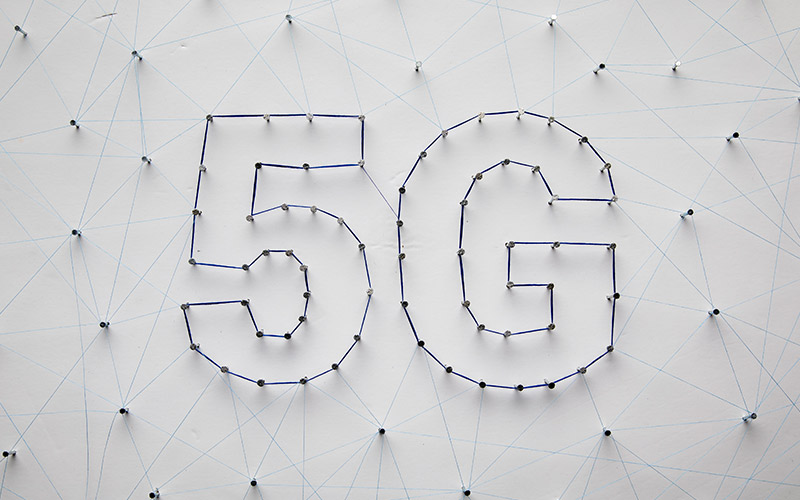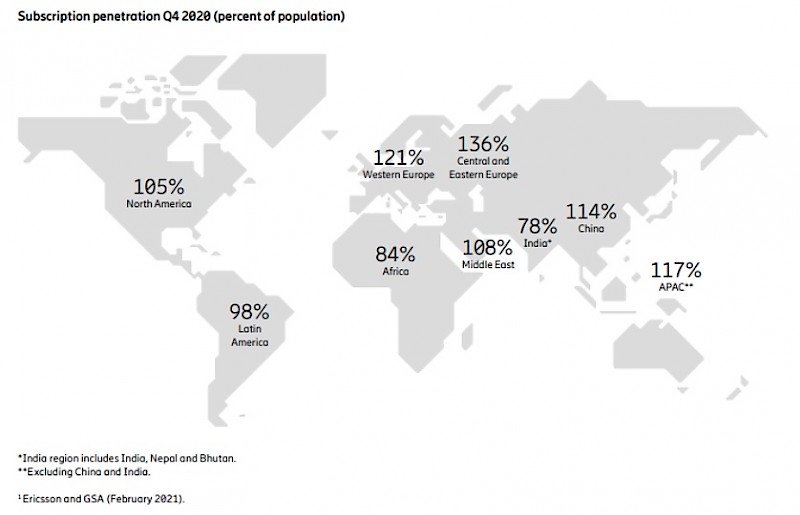
Momentum continues in the build-out of 4G (LTE) networks: global 4G population coverage will be over 80 percent at the end of 2020 and is forecast to reach around 95 percent in 2026. 4G networks are also evolving to deliver increased network capacity and faster data speeds.
Global 5G population coverage was around 5 percent at the end of 2019, with the main deployments made in larger cities. The most extensive coverage build-outs have been in the US, China, South Korea and Switzerland. In South Korea, service providers rapidly built 5G networks that covered a large part of the population. In Switzerland, 5G population coverage reached over 90 percent at the end of 2019.
To date, there have been more than 100 5G commercial launches across the world. The estimated population coverage by the end of 2020 is approximately 15 percent, equivalent to over 1 billion people. 5G coverage build-out can be divided into three broad deployments:
- New bands in the sub-6GHz range
- mmWave frequency bands
- Existing LTE bands
There are big differences between countries in how service providers have deployed 5G. In the US, all three of these categories have been used, resulting in 5G coverage for a large part of the population. In Europe, countries such as Germany and Spain have used deployments in existing bands to create substantial coverage. China has mainly deployed new bands to achieve a large population coverage.

5G estimated to cover around 60 percent of the population in 2026
There are several global factors impacting the forecast; the most evident short-term ones are COVID-19 and the geopolitical situation. The exact impact of these factors on 5G population coverage remains to be seen. 5G is still expected to be the fastest deployed mobile communication technology in history and is forecast to cover about 60 percent of the world’s population in 2026.
Time-critical communications with 5G
Critical IoT is intended for time-critical applications that demand data delivery within a specified time duration with a certain guarantee; for example, data delivery within 50ms with 99.9 percent certainty, or reliability. This is fundamentally different from enhanced mobile broadband connectivity, which maximizes data rates without any guarantee on latency.
Early adoption of time-critical communication is expected for remote control and real-time media applications via public and dedicated networks.
Time-critical communication enables new applications
There are four fundamental time-critical use case categories that are common across various verticals. One of them is real-time media. Another is remote control: it refers to the control of machines, equipment, and aerial and ground vehicles from a distance. Remote control can improve work environments by moving humans out of hazardous locations and giving access to a broader workforce. It is an important functionality for autonomous vehicles, in order to reliably take temporary control in case the autonomous function fails. Industrial control includes real-time process monitoring and control, controller-to-controller communication, smart grid control, machine vision for robotics and motion control. Mobility automation refers to the automation of control loops for vehicles and mobile robots. This can include automated guided vehicles (AGVs), cooperative manoeuvring of vehicles and advanced intersection safety.
Network deployment strategy depends on coverage needs; there are three main network deployment scenarios. Local-area deployment includes indoor and outdoor coverage for a small geographical area such as a factory, port or mine. Confined wide-area deployment is for a predefined geographical area such as a highway or within a city centre. General wide-area deployment is about serving devices almost anywhere. Service providers can start to address time-critical use cases (such as the entertainment, healthcare, public safety and education sectors) in the wide area by adding support for Critical IoT connectivity to the NR carriers through upgrades. More stringent requirements demand network densification, edge computing, and further distribution and duplication of core network functions. In the confined wide area, relatively stringent requirements can be addressed with investments in infrastructure (for example, for automotive, railways, and utilities sectors). In local-area scenarios, extreme requirements can be supported once the end-to-end ecosystem is established.
Source: Ericsson Mobility Report | November 2020, Ericsson Mobility Report | Q4 Update | February 2021



